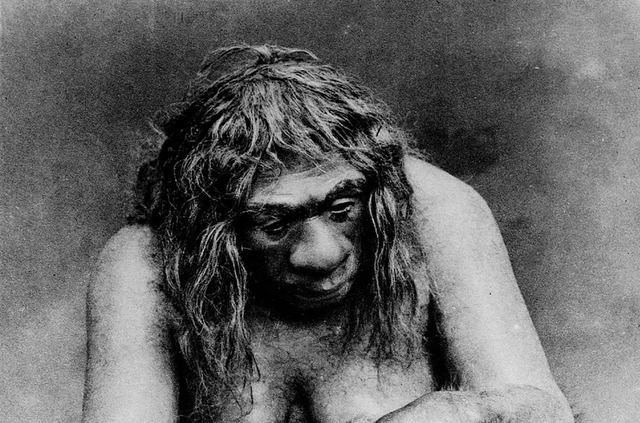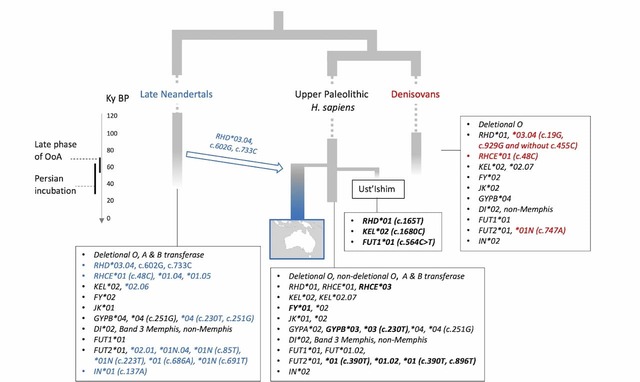What if the key to human survival wasn’t just intelligence or tools, but something flowing through our veins? Recent research suggests that blood type diversity gave Homo sapiens a vital edge over Neanderthals, whose genetic limitations may have sealed their fate. While our ancestors adapted to new diseases and environments, Neanderthals struggled against unseen threats. Could the secret to human dominance be hidden in the microscopic world of red blood cells? Let’s explore how blood shaped the survival of one species—and the extinction of another.
Blood Groups as a Genetic Blueprint
Blood types are more than just a classification system for transfusions; they are a genetic fingerprint that can reveal our evolutionary history. The ABO and Rh systems, in particular, hold clues about how different human populations adapted to their environments over thousands of years.

Blood groups are determined by specific proteins and sugars found on red blood cells. These markers not only define compatibility for transfusions but also influence susceptibility to diseases. For example, certain blood types provide resistance to malaria, cholera, and even some viral infections.
Video
Check out the video to learn about the groundbreaking discovery revealing Neanderthal and Denisovan blood groups. This finding is reshaping our understanding of human evolution!
Genetic Diversity in Homo Sapiens vs. Neanderthals
The Out-of-Africa Migration and Genetic Adaptation
Roughly 70,000 years ago, Homo sapiens began their exodus from Africa, carrying with them genetic traits shaped by generations of survival in tropical climates. This genetic diversity proved invaluable as they encountered new environments, climates, and diseases in Eurasia.
The variation in blood types among early Homo sapiens helped them develop immunity against regional pathogens, increasing their survival rates. Unlike Neanderthals, who had been isolated in Eurasia for hundreds of thousands of years, sapiens had a genetic toolbox better suited for adaptation.

Limited Blood Type Variation in Neanderthals
In stark contrast, Neanderthals exhibited a strikingly low diversity in their blood groups. Genetic studies reveal that their bloodlines remained relatively unchanged for nearly 80,000 years. While stability in genetics can sometimes be beneficial, in a rapidly changing world filled with emerging diseases and shifting climates, it likely became a disadvantage.
Neanderthals primarily carried blood types that may have made them more susceptible to infections. With smaller populations and less genetic variation, they struggled to fight off new diseases introduced by migratory Homo sapiens. The genetic bottleneck effect—the loss of genetic variation due to a small population size—meant that when diseases struck, entire Neanderthal communities could have been wiped out.
The Role of Denisovans in Early Human Bloodlines
Denisovans, another archaic human species, contributed their own genetic material to modern human populations, particularly in Asia and Oceania. Some of their blood group markers can still be found in indigenous peoples of these regions today.
Interestingly, while Denisovans also had lower genetic diversity compared to Homo sapiens, their interbreeding with both Neanderthals and modern humans introduced valuable genes into the broader human gene pool. This exchange may have provided modern populations with immunity against certain diseases.
Blood Type and Disease Resistance
The Evolutionary Advantage of Diverse Blood Types
Modern research has shown that certain blood types offer natural resistance to specific diseases. For example:
- Type O is less susceptible to severe malaria but more prone to severe cholera.
- Type A is associated with a higher risk of severe COVID-19 complications.
- Type B provides some resistance to certain bacterial infections.
This suggests that early humans with a wider variety of blood types had a better chance of surviving outbreaks, allowing their populations to flourish and expand.

How Neanderthal Blood Types May Have Made Them Vulnerable
Neanderthals lacked this broad spectrum of immunity. Without exposure to the same range of diseases as Homo sapiens, their immune systems were less equipped to handle new infections. As Homo sapiens migrated into their territories, they may have introduced pathogens that the Neanderthals had never encountered before, leading to deadly epidemics.
Some scientists suggest that blood type incompatibilities between the two species could have also played a role in reproductive challenges. If interbreeding resulted in offspring with blood group conflicts—such as Rh incompatibility—it might have led to higher infant mortality rates among hybrid populations.
Blood Type and Disease Resistance in Modern Humans
Traces of Neanderthal DNA still exist in non-African human populations today, influencing our health in unexpected ways. Some rare blood group markers linked to Neanderthals have been found in modern humans, particularly in Asia and Oceania. These markers may contribute to immune system responses, but they can also lead to complications in blood transfusions and pregnancy.
Interbreeding and Genetic Legacy
DNA analysis shows that while Neanderthals and Denisovans went extinct, their genetic contributions live on. Some of their blood-related genes, especially those tied to the Rh system, continue to shape human immunity.
One example is a rare Rh variant found in certain indigenous populations. This gene likely originated from interbreeding between Neanderthals and early Homo sapiens, highlighting how ancient genetic exchanges still influence modern biology.
The Rh factor, which determines whether a blood type is positive or negative, has roots in ancient hominin genetics. Some theories suggest that Neanderthal and Denisovan contributions to the Rh system played a role in the evolutionary success of Homo sapiens.
Implications for Modern Medicine
Studying ancient blood groups isn’t just about understanding history—it has real-world applications today. Blood transfusions and pregnancy complications, such as Rh incompatibility, are influenced by genetic markers that date back to early humans. Understanding these markers can improve medical treatments and compatibility testing.
By tracing how blood types evolved to combat diseases in the past, scientists can better predict how modern populations will respond to emerging health threats. This knowledge could lead to more effective treatments for infections, autoimmune diseases, and even pandemics.
Conclusion
Blood has been the silent witness to humanity’s survival and evolution. While Homo sapiens thrived due to their genetic diversity and adaptability, Neanderthals struggled with limited immunity and a lack of blood type variation. The study of ancient blood groups not only sheds light on our ancestors’ survival but also provides valuable insights for modern medicine.
By understanding how blood shaped the fate of early humans, we gain a deeper appreciation for the microscopic yet powerful forces that determined who survived—and who didn’t. The next time you think about your blood type, remember: it carries the story of an ancient battle for survival, written in your very DNA.
Video
Watch the video to uncover the world’s most dangerous blood type. The surprising facts behind it will make you rethink what you know about blood groups!



